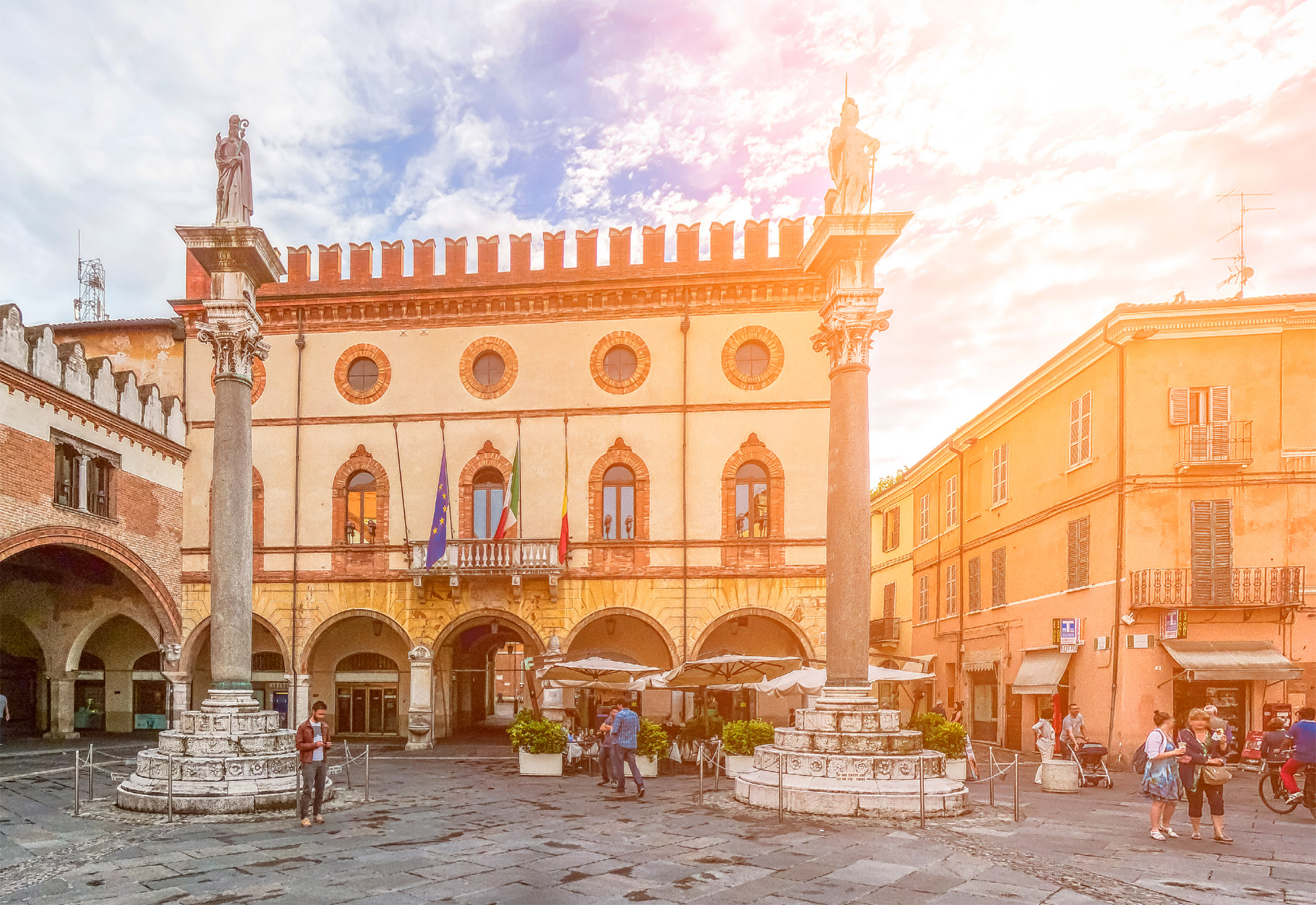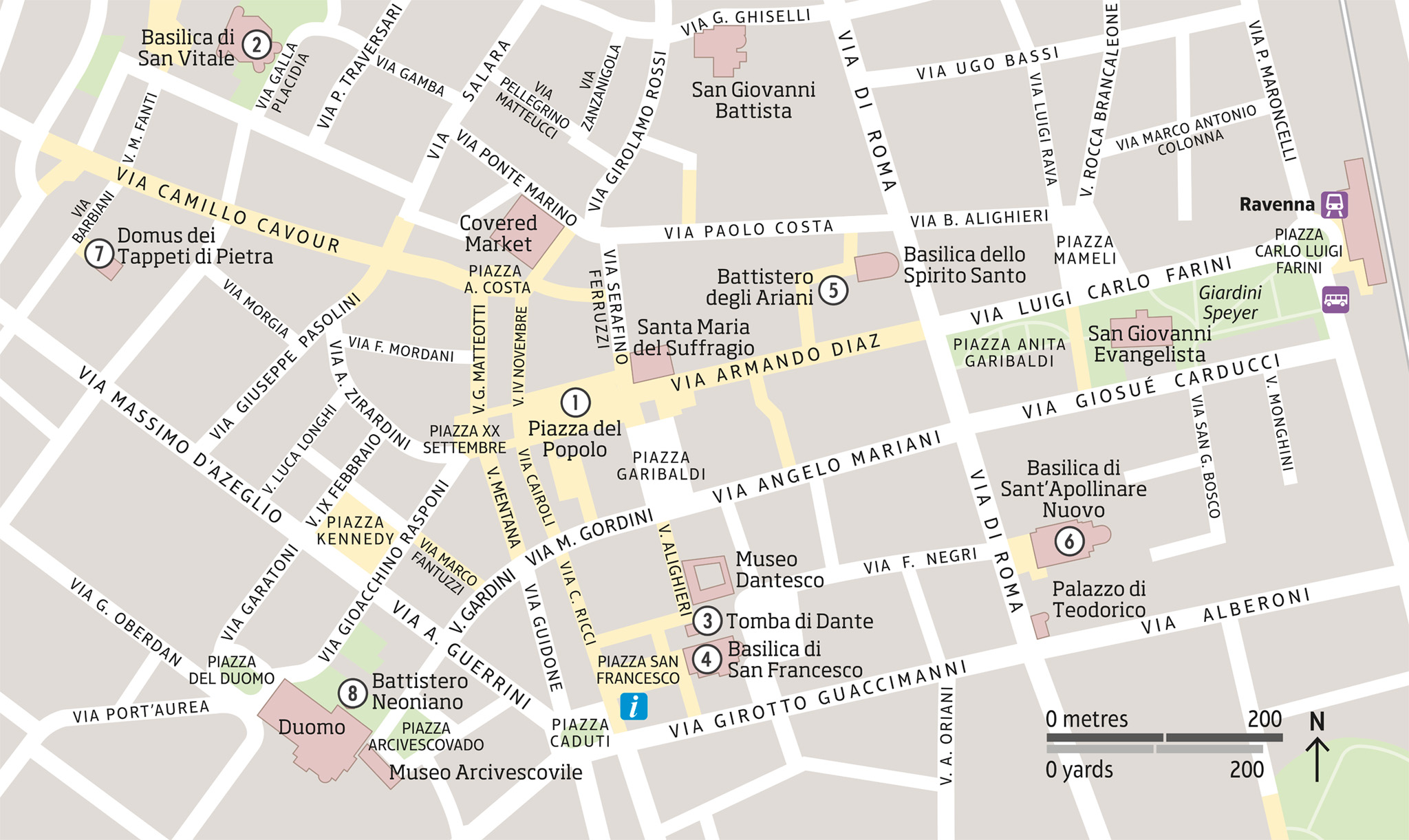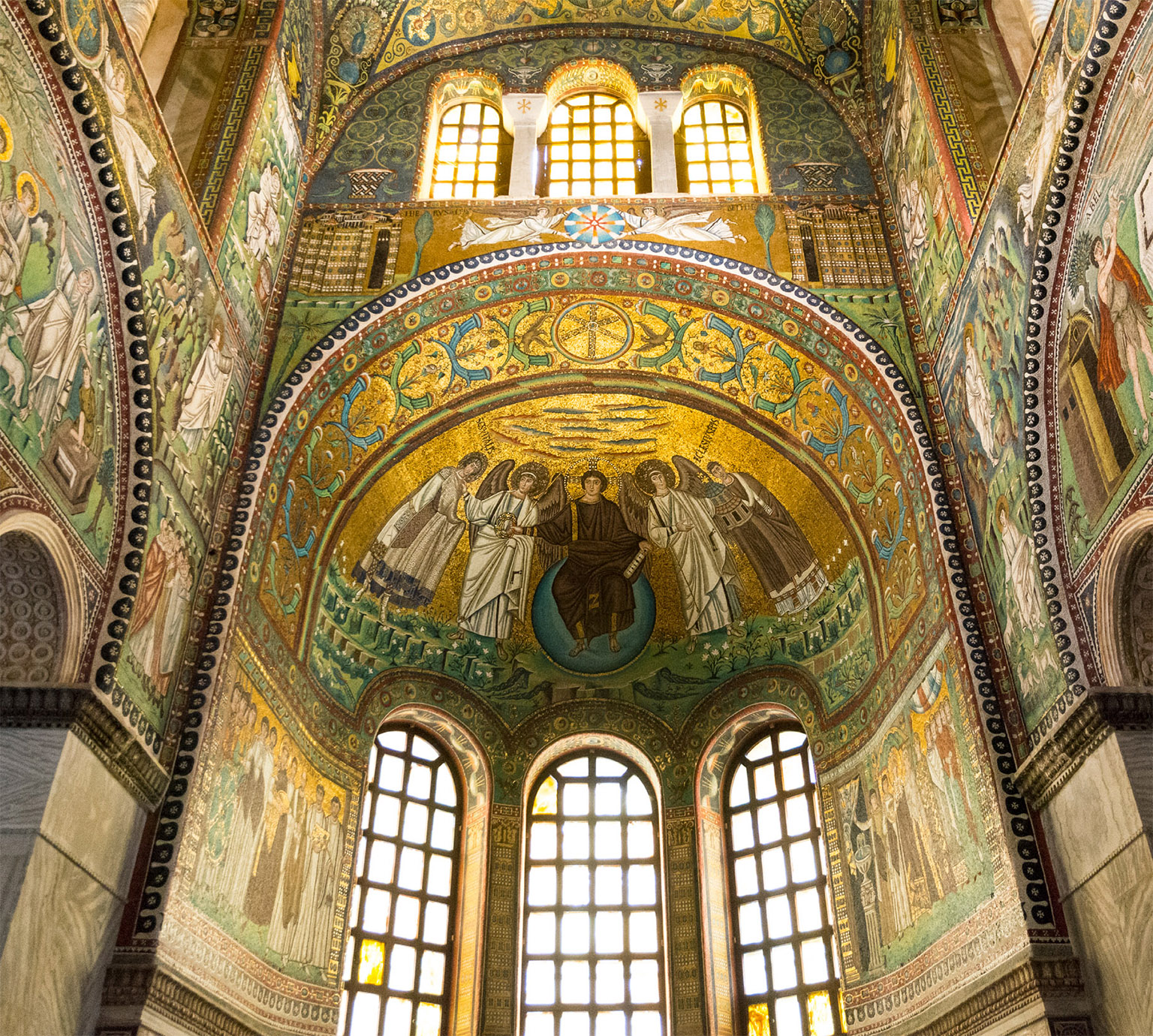
t Saints Apollinare and Vitale atop their columns in Piazza del Popolo
Famed for its glittering Byzantine mosaics, Ravenna’s centre is a pleasant medley of historic cobbled streets, fine shops and piazzas, and is close to some excellent beaches. The city rose to power in the 1st century BC under Emperor Augustus. As Rome’s power declined, Ravenna was made capital of the Western Empire in AD 402, a role it had during the Ostrogoth and Byzantine rule in the 5th and 6th centuries, when many of the city’s spectacular churches and basilicas were built.

t Saints Apollinare and Vitale atop their columns in Piazza del Popolo
Experience Emilia-Romagna

n Double-tap image to read the labels
This elegant square is famed for its two Venetian-style columns with saints Vitale and Apollinare perched on top. Behind is Palazzo Communale and Palazzo Veneziano, built when Ravenna was part of the Venetian Republic in the 15th century. The archway in Palazzo Veneziano leads to Via Cairoli, a narrow shopping street. Nearby is Piazza Andrea Costa, home to a covered market that sells all manner of fresh local produce every morning.
Finished in 548, this octagonal basilica is the only major church from the period of Emperor Justinian I to survive virtually intact. Its colourful mosaics are the height of Byzantine splendour. Look out for the emperor portrayed with court officials and, on the opposite wall, the Empress Theodora. The apse mosaics show Christ, San Vitale and Bishop Ecclesius, who began the church.
The interior of Dante’s tomb, which was built in the late 18th century, contains a bas-relief by Pietro Lombardo (1483) and a votive lamp that continually burns olive oil donated by Florence each year on the anniversary of Dante’s death. The adjacent Dante museum includes paintings of the poet as well as research findings.

Hidden Gem
Relaxed, surfer-style beach bars and restaurants abound at Marina di Ravenna and its nearby resorts. For ultimate seaside refinement, head for Milano Marittima.
The main feature of interest in this church is the flooded crypt, which contains 10th-century mosaics and columns.
The cupola of this tiny late 5th-century baptistry has an impressive mosaic showing the 12 Apostles ringed around a scene depicting the baptism of Christ.

t The nave of Basilica di San Vitale, covered in colourful mosaics
This glorious 6th-century church has a cylindrical bell tower and some of the largest Byzantine mosaics in the city. Look out for the two rows of mosaics showing processions of martyrs and virgins bearing gifts for Christ and the Virgin.
A Byzantine house dating from the 5th and 6th centuries, Tappeti di Pietra was only discovered in the 1990s and has beautiful mosaics on the floors of the 14 rooms.
The Neonian Baptistry dates from the 5th century and is named after the bishop who may have commissioned its decoration, which includes a mosaic of the baptism of Christ. Built near the ruins of a Roman bathhouse, it is Ravenna’s oldest monument.